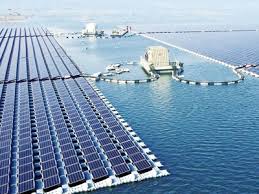I recently received some feedback that there’s enough bad news from the media everyday and that it would be nice if I were more positive in my messaging. Yes, there is some negativity in my writing. But mostly, I think I have been encouraging optimism. In considering this I hope that my themes are coming through:
1. Negative: The Climate Crisis is real and the consequences are getting worse and critical and that we’re just STARTING to see the tip of the iceberg (or less icebergs as the case may be). Admittedly not a positive tone but necessary to alarm people into action.
2. Positive: We are progressing in a necessary direction with greater and greater urgency at greater and greater speed faster than anyone predicted (except me, of course!).
a. In electrifying transportation.
b. In shutting down coal fired power plants, skipping over natural gas and ramping up renewables at lower costs and creating scores of new good jobs here in the good ol’ USA.
c. That financing for fossil fuel companies and and projects is increasingly drying up and being directed toward renewables further increasing the transition.
d. That insurance companies are increasingly refusing to insure fossil fuel projects which is also speeding up the transition. And by refusing to provide insurance for properties that are increasingly at risk, they are hastening the mitigation that is prudent to protect assets from the dangers.
e. That there is NO evidence, and never has been, that doing what is right for the economy is not good for the environment. In every instance doing what is right is economically beneficial AND good for public health (and that in itself is good for the economy).
f. That, thank goodness, mostly the courts are enforcing our bedrock environmental laws and thus contributing to promoting solutions.
I’m sure I could go on but hopefully you get the idea and agree that while being scared of what’s coming at us, there is more and more recognition that the problems are grave and bold solutions are necessary and increasingly being developed and implemented.
So… I suppose I had better make today’s news uplifting!! And so it is.
As the title suggests, it is possible to create positive change. Richard Nixon signed the Clean Water Act in 1972 and since then we have made remarkable progress in cleaning up our waters. While we still have a good way to go, at least our rivers no longer catch on fire!
I am delighted to send you the following article especially because it relates to my home town. And interestingly, it confirms what people around here have been anecdotally noticing and saying for a while now.
“The variety of fish swimming in Chicago’s rivers has increased in recent decades, which authorities attribute to a decline in pollution, according to a sampling study released yesterday by the Metropolitan Water Reclamation District.
The report claims there are nearly 60 types of fish swimming in the Chicago and Calumet rivers. There were fewer than 10 types of fish in the waterways in the 1980s, according to the Chicago Tribune.”
“Shedd Aquarium research biologist Austin Happel said the more robust and diverse population of fish is an example of how the fight to clean the rivers is paying off after decades when they were turned into industrialized sewage canals.”
Nearly 60 Fish Types in Chicago Waters, Up from About 10
Tuesday August 4, 2020
The variety of fish swimming in Chicago’s rivers has increased in recent decades, which authorities attribute to a decline in pollution, according to a sampling study released yesterday by the Metropolitan Water Reclamation District.
The report claims there are nearly 60 types of fish swimming in the Chicago and Calumet rivers. There were fewer than 10 types of fish in the waterways in the 1980s, according to the Chicago Tribune.
Carp is the most frequently found species in the rivers. Among other species netted by district biologists were bluegill, catfish, largemouth bass and yellow perch. Those fish are less tolerant of pollution than carp.
Shedd Aquarium research biologist Austin Happel said the more robust and diverse population of fish is an example of how the fight to clean the rivers is paying off after decades when they were turned into industrialized sewage canals.
“We’re already seeing that if you can increase fish diversity, you’re also able to increase how people use waterways,” said Happel, the chief author of the study.
The most dramatic improvements in fish populations occurred after 1984, when the district stopped releasing sewage treated with germ-killing chlorine into local waterways. Unlike most other cities, Chicago didn’t remove the chemical before pumping treated sewage into rivers and lakes because it was exempt from some provisions of the 1972 Clean Water Act. However, the city obtained billions of dollars from the federal government to build tunnels and reservoirs, which by the mid-1980s to prevent flooding and keep pollution out of the rivers and Lake Michigan.
“Improvements definitely were more dramatic in those earlier years after the tunnels came online and they stopped chlorinating,” said Dustin Gallagher, a district biologist and co-author of the study. “Over the years we are seeing more bluegill and more largemouth bass and steadily larger game fish — all good signs.”
Gallagher said providing suitable places for fish to reproduce and thrive remains a problem because stretches of the local rivers were dredged and lined with sheet metal a century ago. And billions of gallons of sewage and runoff still pour into the rivers during and after storms.
Most of the fish in the Chicago River and its connected channels are safe to eat, though the state advises people to limit consumption to avoid toxic chemicals known as PCBs, a legacy from a century of industrial pollution. — Associated Press



